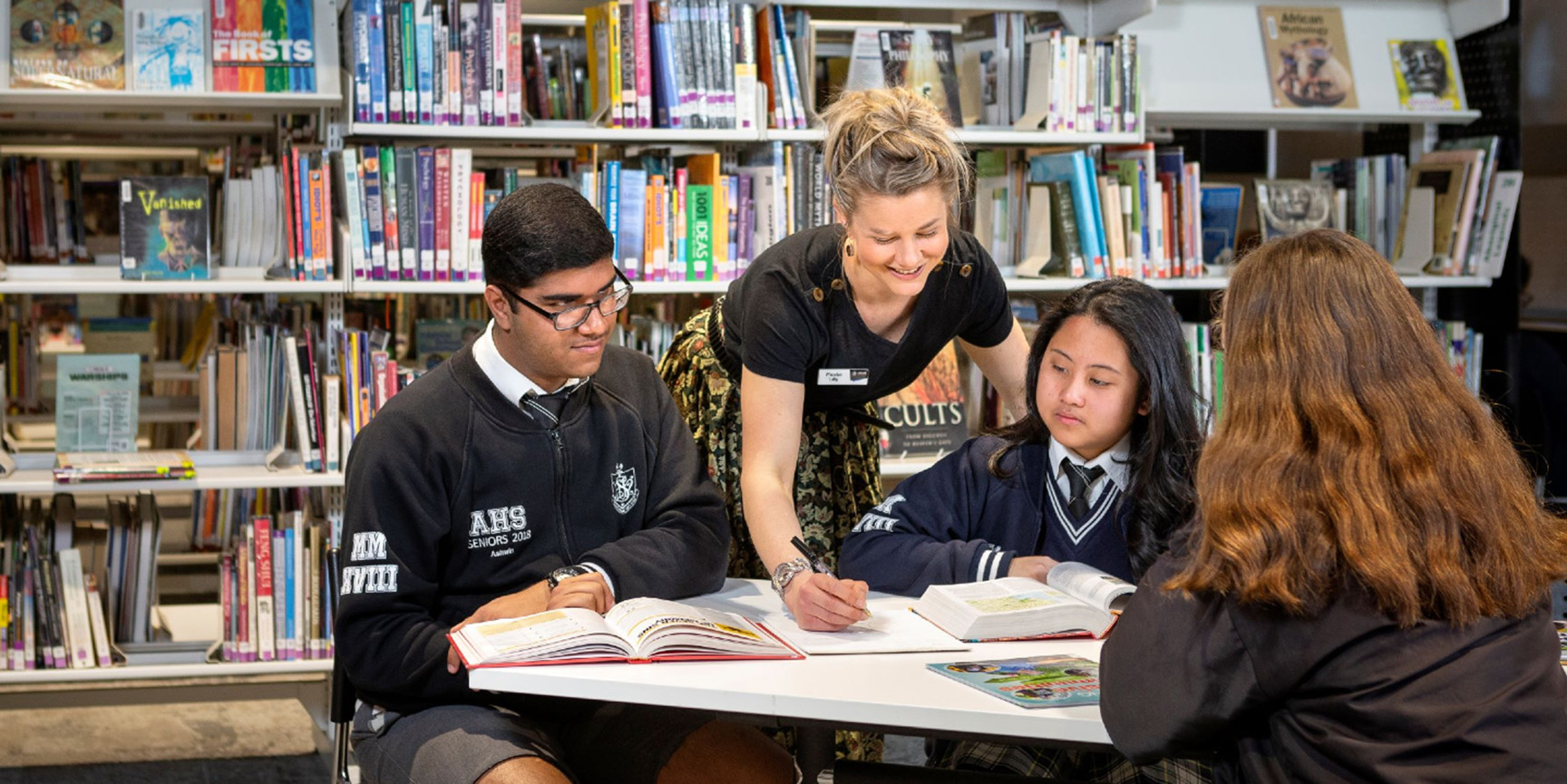
Teacher librarians linked to improved student literacy
Research 7 Sep 2020 6 minute readNew research by the Australian Council for Educational Research (ACER) reveals schools with a qualified teacher librarian are more likely to have improved student literacy outcomes.
The finding stems from a census of South Australia’s school library and information services and their staffing, commissioned by the School Library Association of South Australia (SLASA).
The 2019 census aimed to address the absence of accurate information about the current nature of school library and information services in Australia by collecting data on areas related to staffing, support, facilities and funding of school libraries, as well as identify how information services are managed when there is no staffed library provision within a school.
A survey of all 728 Government, Catholic and independent schools in South Australia revealed that, while around 6 per cent of schools do not have a physical on-site school library, all have access to library-type reading, research and curriculum resources and information services, either virtually or through a community or mobile library.
As part of the study, ACER analysed NAPLAN 2018 data and found students’ reading, writing, spelling, grammar and punctuation outcomes at Years 3, 5, 7 and 9 were significantly associated with the qualification-level of the person who manages the library.
Most South Australian schools (94 per cent) have someone to manage the library collection and to select resources but less than a quarter (23 per cent) are managed by a qualified teacher librarian. A further 20 per cent of school libraries are managed by a library-qualified school services officer.
Students in schools with a qualified teacher librarian had up to two month’s learning gain, compared to students in schools with no staff member managing the library, after taking into account the effect of socioeconomic status. The difference in student literacy outcomes was strongest at Year 9 and weakest at Year 7.
One of the factors that may be contributing to these learning gains is the ability of qualified teacher librarians to free up classroom teachers’ time. The census revealed several tasks that could be managed by a teacher librarian but are often performed by other school staff, including:
- managing the school’s literacy and reading program – currently the responsibility of curriculum leaders or faculty heads in 39 per cent of schools and by teacher librarians in 6 per cent of schools.
- research, study skills, and inquiry learning – currently managed by classroom teachers in 55 per cent of schools and by teacher librarians in 18 per cent of schools
- Copyright/Creative Commons and ethical use of information – currently the responsibility of a classroom teacher in 33 per cent of schools and teacher librarians in 23 per cent of schools
- developing referencing skills – currently taught by a classroom teacher in 52 per cent of schools and by teacher librarians in 20 per cent of schools
This suggests there is clear opportunity to reduce the burden on classroom teachers by having qualified teacher librarians on staff. But the value and effectiveness of school libraries depends not only on the qualification level of the person managing it but also the time fraction at which they do it.
The census revealed that 55 per cent of school libraries are managed on the equivalent of less than half a full time equivalent (FTE) position. Nineteen per cent of school libraries are managed full time while 26 per cent are managed between 0.6 and 0.9 FTE.
ACER compared the current number of qualified teacher librarians in South Australian schools to the staffing levels recommendations of the Australian Education Union South Australia (AEU SA) staffing policy. Smaller primary schools were more likely to be adequately staffed with a qualified teacher librarian, while moderate to larger sized secondary schools and K-12 schools were more likely to be under-staffed. For example, while the AEU SA staffing policy recommends that a large school of between 1000-1200 students should have 2.5 FTE qualified teacher librarians on staff, the census recorded an average of 1.2 FTE qualified teacher librarians in these schools.
The 2019 census of school libraries in South Australia suggests a diverse cohort of dedicated but under-qualified staff, managing a complex array of library and information services, often in isolation, and at levels below AEU SA staffing recommendations. Based on these findings, ACER developed a set of recommendations to facilitate equitable resourcing to support quality student learning across all South Australian Schools.
ACER’s work for SLASA serves as a model for education departments and policymakers across all Australian education jurisdictions and federally, towards gaining an accurate and complete picture of school libraries and their staffing across Australia.
Read the full report:
School libraries in South Australia: 2019 Census by Katherine Dix, Rachel Felgate, Syeda Kashfee Ahmed, Toby Carslake, Shani Sneidze-Gregory (ACER, 2020).